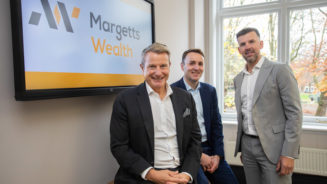The fund’s overall AUM, which includes both the Montreux Care Home Fund domiciled in Luxembourg, and the Montreux Healthcare Fund in the Isle of Man, was £80m at the end of 2014, a £60m increase from the start of the year.
Portfolio manager John Godden, who has been with the company since 2013, said the institutions which have come on board over the past 12 months, including CCLA Investment Management – manager of the Church of England’s (CoE) assets – are drawn by the strong income and growth story presented by the sector.
Strong demographics
Investing in care home facilities – including all the staff and management of the facilities – for adults with learning disabilities as well as the elderly, the Montreux Care Fund generates the majority of its income from the fees it charges local authorities or individuals. There is also underlying capital growth from the value of the properties it owns and renovates.
The attractive demographics for care home investment in the UK is well known, with an aging population requiring increasing amounts of long term care.
There is also a less well known opportunity in providing care for adults with learning difficulties however, particularly as this is also an aging demographic. Godden explained that where the life expectancy for a child born with Down’s syndrome in 1975, for example, was 22 years, it is now 58 due to the higher quality of care and medicine.
However, while it is the responsibility for providing this higher level of care falls to the local authority once a person is 18, cost and other factors make it difficult for some councils to provide the type of first class care now expected. This, said Godden, is where a company like Montreux is able, due to its scale, to provide a quality service, while remaining affordable for councils and profitable.
Last year, the fund returned 28% and Godden explained, even if there was no investment in new care homes, providing new beds for which the company charges around £1,400 per week, the fund’s “natural yield” would be about 10%.
Headwinds
There are of course some potential headwinds. Of the 4000 staff employed by Montreux, around 10% are on the UK’s minimum wage and there is a danger this could be increased by a new government in May. However, Godden said it could absorb an increase in wage costs of around 20%, with the company remaining profitable.
With such a significant amount of property owned by Montreux, a rise or fall in the property market could also have an impact on the fund. The main danger in the short term though, as the fund grows and the underlying company continues to expand its ownership of care homes across the UK, is a significant rise in property value.
However, Godden said there are a number of large institutions “waiting in the wings” to invest cash, so being priced out of deals isn’t a concern. He also emphasised that Montreux does not build new care homes in the hope they will be filled, but opens new ones following demand from local authorities. An example of this is a new facility it has built in Hartlepool.
Godden also explained that, while property does ostensibly make up a significant portion of the portfolio, it is the business itself of providing care, which drives the performance, generating the yield and overall returns.
“One of the reasons why Montreux is now so well placed is because of its scale,” said Godden. “There are also two significant barriers to entry which prevent others, like similar outfits in the US, from competing – capital, and the fact the regulator, the Care Quality Commission, is very happy with what we do.”
In addition to attracting increasing institutional business, Montreux said international advisers are now also recommending its funds, with around £3m to £3.5m being invested via these intermediaries each month.
It is worth noting however that, while smaller retail investors are provided with monthly liquidity, to avoid any of the problems which have beset some property funds over the past few years, institutional clients are locked in for a set period.
Godden also revealed the long term strategy for the fund will be to float, with the manager predicting an initial public offering after perhaps five years.





